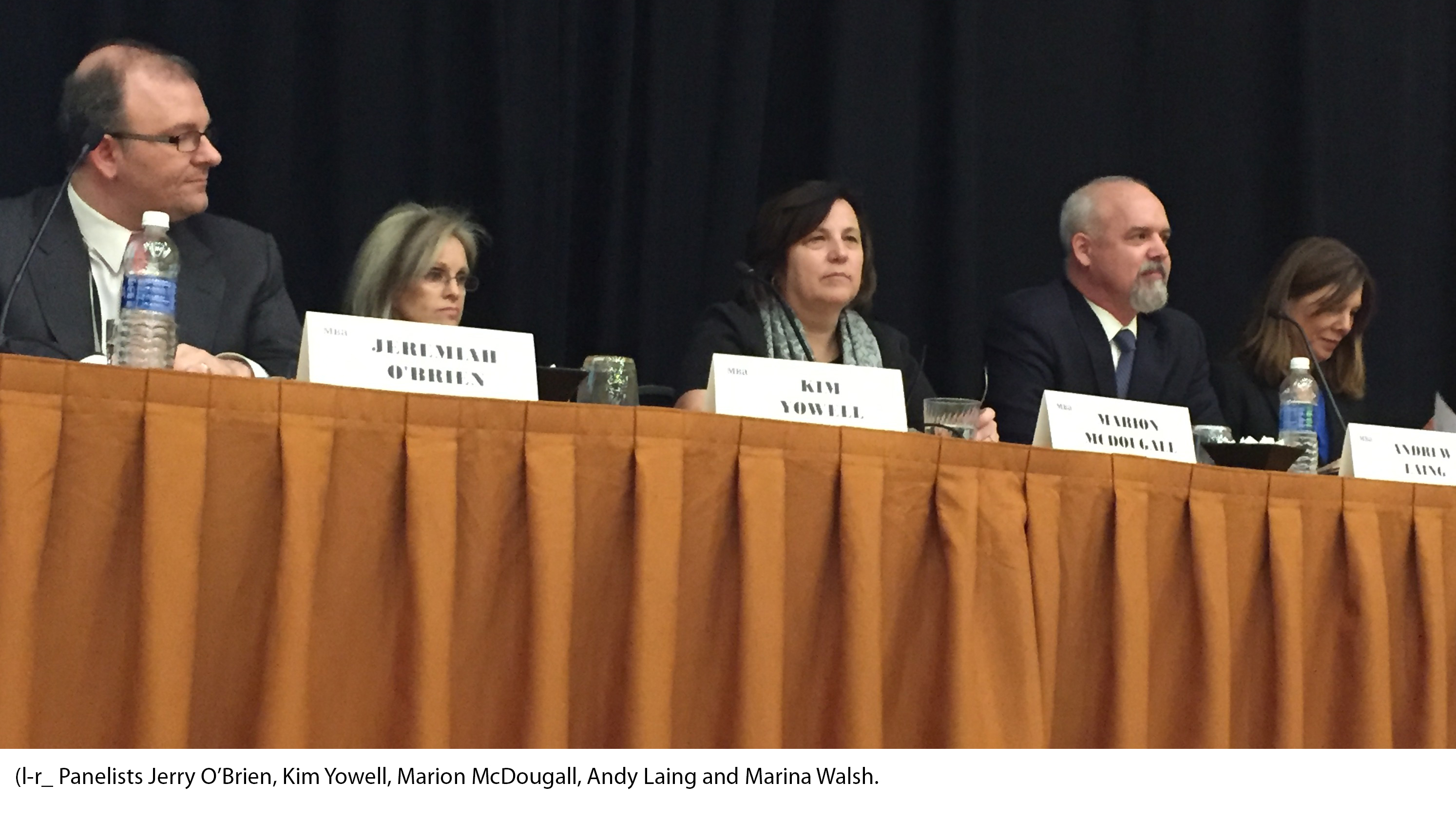
Servicers Balance Cost Containment/Efficiency Strategies
DALLAS–Even with the default crisis behind us, servicers large and small, bank and independent, struggle with cost containment.
Marina Walsh, MBA vice president of industry analysis, noted servicer productivity has increased in recent years, while servicer costs have stabilized in a declining default environment. Direct costs have fallen as well, although many servicers continue to retain a large number of default-related employees.
 “Do we accept that this is the way it is as mortgage servicers?” Walsh posed here at the MBA National Mortgage Servicing Conference & Expo. “Or are their ways to further reduce costs while maintaining efficiencies?”
“Do we accept that this is the way it is as mortgage servicers?” Walsh posed here at the MBA National Mortgage Servicing Conference & Expo. “Or are their ways to further reduce costs while maintaining efficiencies?”
Marion McDougall, executive vice president and chief loan administration officer with Caliber Home Loans Inc., Irving Texas, said efficiency involves two elements: customer self-service and enhanced process automation.
“Customers really don’t want to talk to you,” McDougall said. “The question is about how efficient your channels are to allow the customer to do what they need to do.”
Caliber’s “customer empowerment” initiative began three years ago; it was recently ranked eighth by J.D. Power & Associates on customer service.
“Nothing is more important than a first impression,” McDougall said. “It begins with the first interaction and can continue for 90 days or 30 years.”
Measuring customer satisfaction involves customer journey mapping, communication assessment and surveys and focus groups. “It’s easy for us to sit in a room and think we’re doing a good job,” McDougall said. “It’s another thing to have data and feedback in which we can measure our success. We gain efficiency as our customer experience improves.”
McDougall added that 1 percent of all the feedback received results in substantive changes to Caliber’s operations. “That doesn’t sound like much, but for us that is huge,” she said. “We’re aware that the way we communicate today is perceived as not easy…we need to make it more ‘funky’ for a more enjoyable customer experience.”
Andy Laing, COO of Fay Servicing LLC, Chicago, said costs are “way too high” for servicers. As a default servicer, the company deals with loans that are, on average, 700 days delinquent at the service transfer, although he noted that 65 percent of the company’s portfolio is current (less than 60 days delinquent).
“We may have the highest cost structure in the industry–and that might not be a bad thing,” Laing said. “You have to spend money to make money. In managing these costs, we are trying to provide outstanding customer service and we must be compliant with regulations.”
Laing noted customer service numbers are strong. “Our abandonment rate is less than 1 percent,” he said. “Our average response time to a phone call is six seconds and our average time spent per client on a call is six minutes…we place a premium on human interaction. We have single point of contact for each customer.”
Another factor, Laing said, is keeping customer service in house and on shore. “We have three regional centers in the U.S.,” he said.
Kim Yowell, senior vice president and servicing manager with Bank of Oklahoma Financial, Oklahoma City, said the company has made substantial investments in technologies in 2015 and 2016, including a decision engine/workflow for loss mitigation, a workflow for claims, a claims processing submission tool and an invoice management systems.
“The main reason for these conversions was for compliance, not efficiencies,” Yowell said. “But we hope to realize some efficiencies as we move forward.”
The system conversion project, involving more than 30 employees, included de-conversion off of the existing platform and converting nearly 200,000 active and inactive loans. It involved developing more than 100 internal and external interfaces, along with branding, testing and training. It also resulted in a new website and bringing back in-house a collections site and team. The project was completed within 10 percent of its initial cost projections.
“To do all this, you have to have your IT process on board, as well as any number of resources,” Yowell said. “Going live takes more than planning–it takes a battle plan.” She added that a project of this scale required a strong management team “with a lot of trust for each other.”
Forty-five days out, Yowell said, “We hope things settle down in the fourth quarter.” She said over the next five years, the bank expects to recoup the investments through current and future staff savings.
Jerry O’Brien, vice president and co-head of operations with Fannie Mae, Washington, D.C., said the government-sponsored enterprise is working toward simplifying the servicing environment. “It’s not about making the process simpler for you; it’s about simplifying the process for the customer,” he said.
Fannie Mae’s strategy involved a four-step process: starting with a business strategy; performing unaided research across different customer groups; leveraging “agile” and design thinking techniques; and focusing on making it easy and less expensive for servicers to service a Fannie Mae loan.
The Flex Mod system rolled out by Fannie Mae and Freddie Mac last year was designed to simplify the process. “We look at what we can do to drive straight-through processing,” O’Brien said.
Fannie Mae identified enablers of simplification: Data; Technology; and Policy. “It starts with data–clean data,” O’Brien said. “You have to get your data house in order and have reporting and analytics that support clean data.”
Technology simplification efforts involve digitization, automation and easier self-service functions. And policy, O’Brien said, “can make for good processes.”
